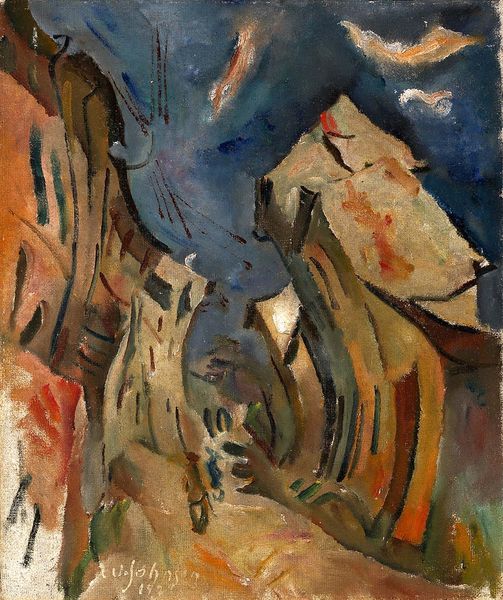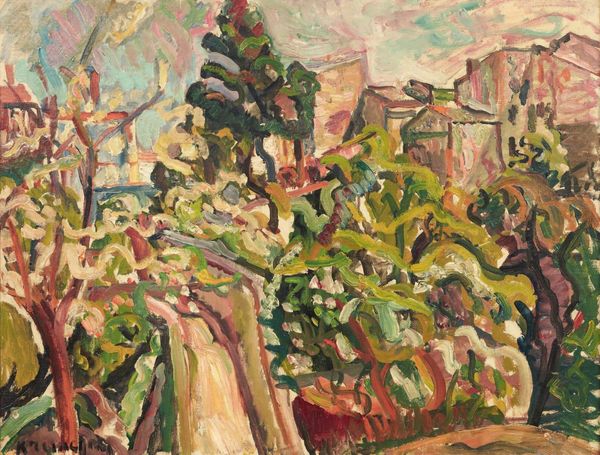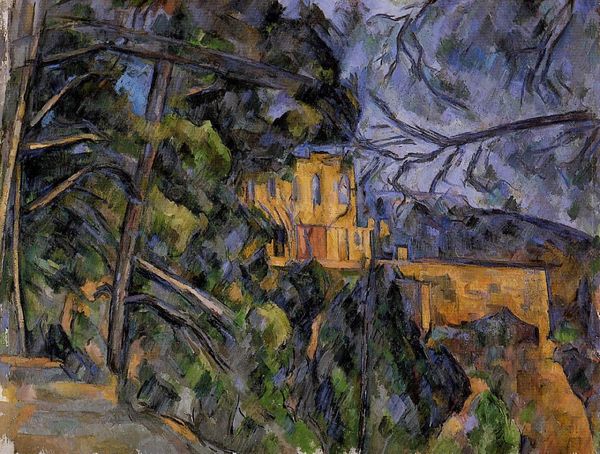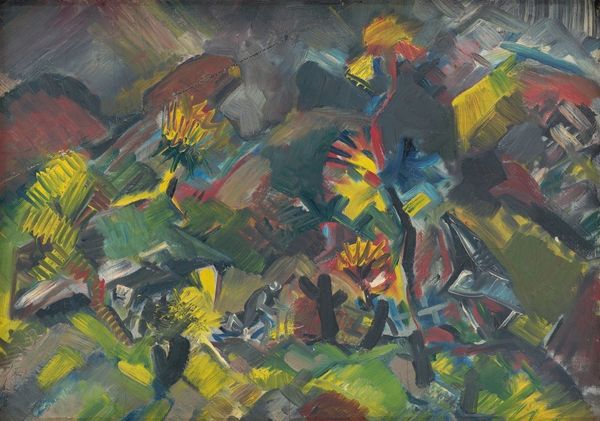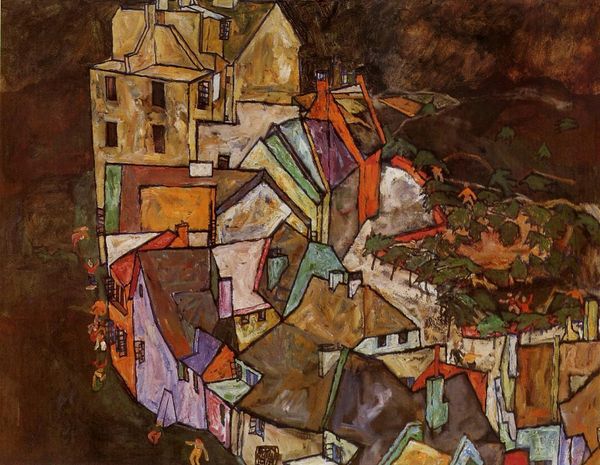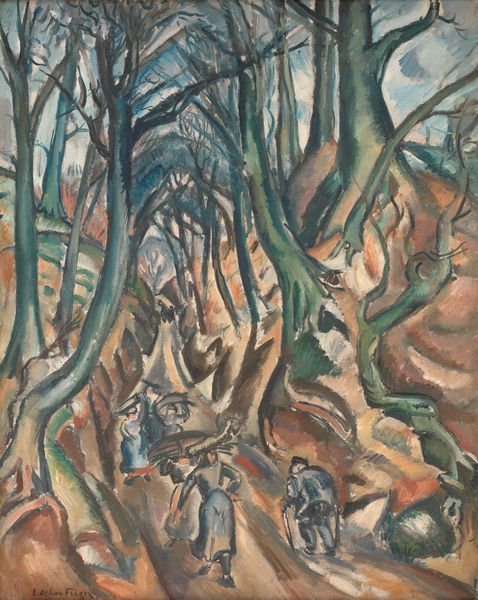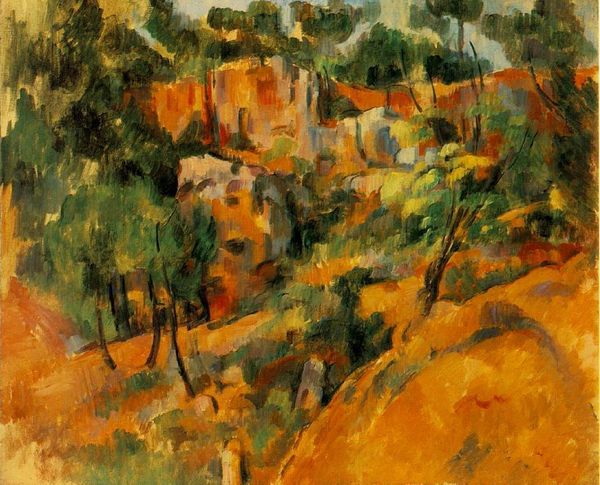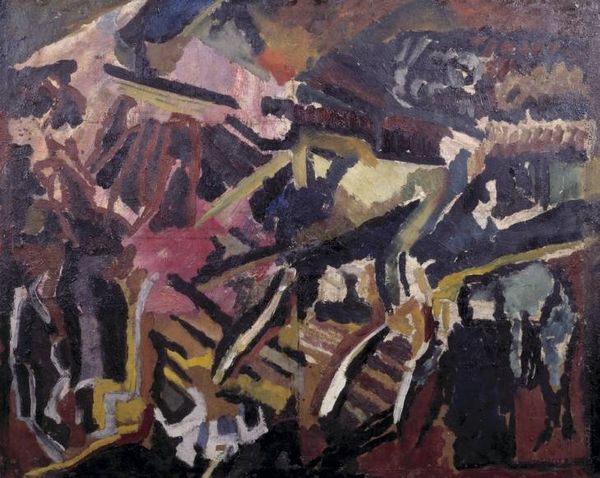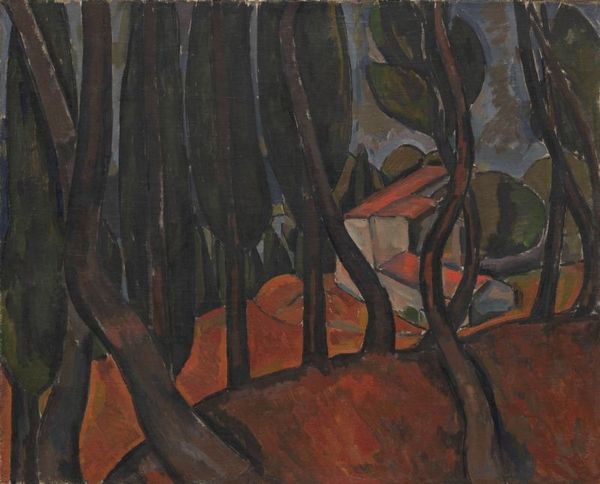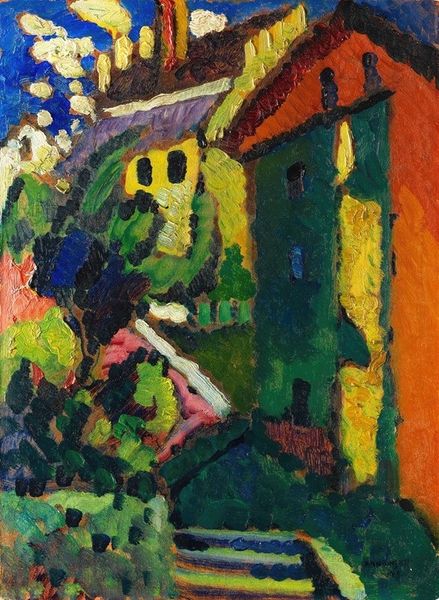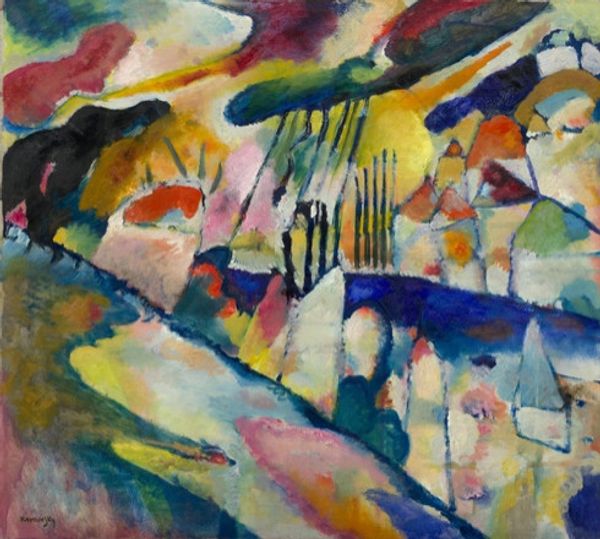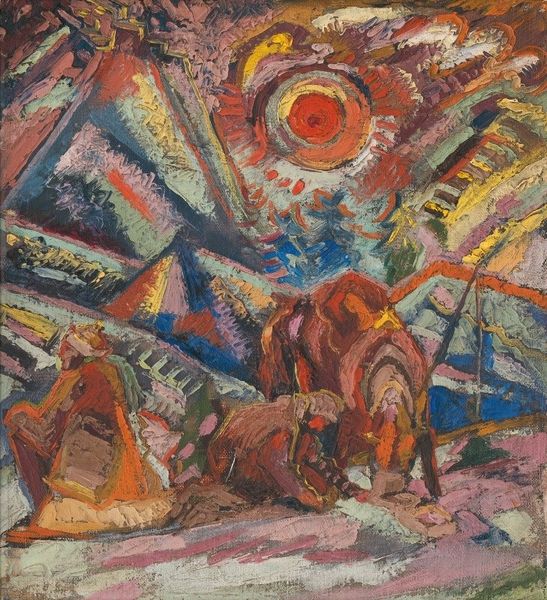
Copyright: William H. Johnson,Fair Use
Editor: This is William H. Johnson's "Cagnes-sur-Mer" painted in 1929 with oil on canvas. There is such a vibrancy of colour in the brown buildings, with the vivid blue of the sky in the background. The expressionistic style and loose brushstrokes give the entire cityscape an almost restless quality. What strikes you when you observe this work? Curator: I'm immediately drawn to the structural relationships at play. Notice how the artist uses a limited palette to construct a visual experience where the buildings and landscape almost merge? The strong vertical thrust of the composition, punctuated by angular forms, gives the work a sense of dynamism. It is the material application that gives the eye places to rest, whilst contrasting planes establish a unique depth. How do you interpret the balance of chaos and order that the composition evokes? Editor: I hadn’t really considered that balance, but now that you point it out, the shapes seem almost on the verge of collapse, yet held in place by the skillful brushstrokes and color choices. Is the artist's expressive style an attempt to create a cohesive whole or something else? Curator: Think about the Fauvist principles apparent here—color isn't descriptive, it's expressive. The artist emphasizes the intrinsic qualities of color. Consider the weight and volume he gives to these planes and the geometry of form in what we think is organic material. Editor: I am coming to understand that this piece's formal qualities are a lens for viewing emotion, as well as space, maybe that can lead us to decode it even further? Curator: Precisely, seeing the structural relationships between elements here, we can consider not only form but expression.
Comments
No comments
Be the first to comment and join the conversation on the ultimate creative platform.
